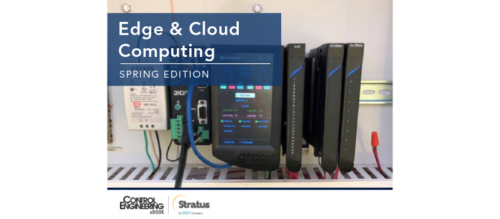Alaskan pipeline flows with Modbus TCP in its industrial Ethernet
Enhanced automation architecture for the Trans Alaska Pipeline System provided capability to remotely operate the system, incorporating Modbus TCP in its industrial Ethernet network technology. See diagram.
Portland, ME – In an industrial Ethernet networking application, Alyeska Pipeline Service Co. (APSC) operates the Trans Alaska Pipeline System (TAPS), 800 miles from Prudhoe Bay through rugged terrain to Valdez, the northernmost ice-free port in North America.
APSC has transported more than 15 -billion barrels of oil via TAPS since pipeline startup in 1977. Automation software that connects to the Ethernet, whether running on commercial or industrial hardware, is already inherently “rugged” in nature with built- in retry logic and error correction as common functionality, Kepware says.
A recent project enhanced the TAPS automation architecture and provided the capability to remotely operate the system. APSC identified that installing new equipment would alter hydraulic and operating parameters, explained Tony Paine, CTO of Kepware . To predict and modify programming and operating configurations prior to installation, APSC engineers decided to create a rugged simulated I/O and valve system, mirroring live conditions.Components, explains Paine, include Allen-Bradley ControlLogix PLCs by Rockwell Automation , ICS Triplex PLCs , I/O simulator by Telvent , and a valve simulator configured in a UCOS distributed control system (DCS).
See more of this image and other great pipeline photos , at www.alyeska-pipeline.com.
To complete the system APSC engineers needed to link these virtual control components and I/O components, Paine says. The system integrator used Kepware’s OPC server KepServerEX with DDE Client driver plug-in and Modbus TCP/IP master driver plug-in. Kepware’s OPC server bridging product LinkMaster pumped data among connectivity components.The configuration (see diagram) mimicked lab-based controllers and field I/O to “test and troubleshoot certain aspects of our system before the programming reaches the field,” says Jim Foster, the lead APSC engineer on the project. “The simulation system will also be used to test and qualify the control center operators in conjunction with other training tools,” Foster added. www.kepware.com
– Edited by Mark T. Hoske , editor in chief Control Engineering News Desk Register here .
Do you have experience and expertise with the topics mentioned in this content? You should consider contributing to our CFE Media editorial team and getting the recognition you and your company deserve. Click here to start this process.





